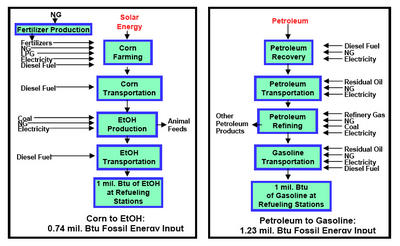A Manhattan Project for Conversion Technology

There is a riveting and extremely important non-fiction book that was published this year by New York Times columnist Thomas L. Friedman called "The World is Flat: A Brief History of the Twenty-First Century."
His thesis is that developing countries (primarily India, China and other Asian countries) are apt to reach parity with the U.S. in the next generation or two because of the "flattening" of opportunity arising from changes in communication and their motivation to succeed in areas we have become complacent, namely science and engineering.
Here's an EXCERPT that relates directly to developing alternative fuels and reducing greenhouse gases (page 283)...
"...it is not easy to get people passionate about the flat world. It takes some imagination. President Kennedy understood that the competition with the Soviet Union was not a space race but a science race, which was really an education race. Yet the way he chose to get Americans excited about sacrificing and buckling down to do what it took to win the Cold War--which required a large-scale push in science and engineering--was by laying out the vision of putting a man on the moon, not a missile into Moscow.
"If President Bush is looking for a similar legacy project, there is one just crying out--a national science initiative that would be our generation's moon shot: a crash program for alternative energy and conservation to make America energy-independent in ten years. If President Bush made energy independence his moon shot, in one fell swoop he would dry up revenue for terrorism, force Iran, Russia, Venezuela, and Saudi Arabia onto the path of reform--which they will never do with $50-a-barrel oil (!)--strengthen the dollar, and improve his own standing in Europe by doing something huge to reduce global warming. He would also create a real magnet to inspire young people to contribute to both the war on terrorism and America's future by again becoming scientists, engineers, and mathematicians.
"I have consistently been struck that my newspaper columns that have gotten far and away the most positive feedback over the years, especially from young people, have been those that urged the president to call the nation to this task. Summoning all our energies and skills to produce a 21st century fuel is George W. Bush's opportunity to be both Nixon to China and JFK to the moon in one move."





